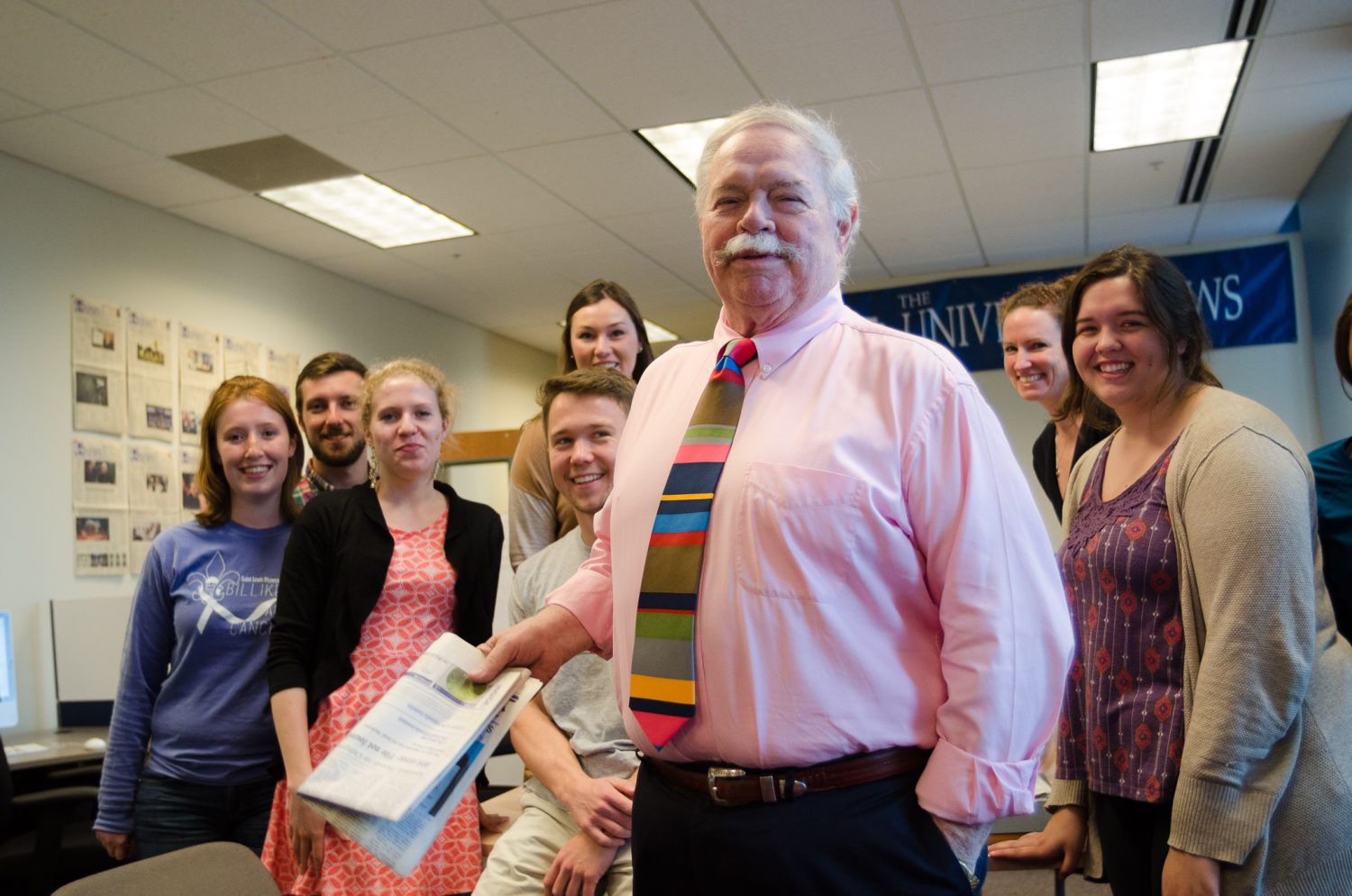One day in school, he was told by a teacher that his mother had died. As the teacher prepared to console him, he responded, “It was God’s will.” He was 9.
When he was in his 30s he used to lead retreats for teen-agers. But, as the story goes, he was not allowed to lead bike rides. The young boys and girls, knowing how often their leader tended to drift away in prayer, worried that he might lead them into a tree.
In 1978, at the age of 58, this man, Karol Wojtyla, chose a new name, one more fitting for his recent promotion. Later that day, Karol Wojtyla greeted the world as Pope John Paul II.
John Paul will probably die soon. He is 80 years old and getting weaker. The demands of his office and his Parkinson’s disease are getting stronger.
Recently, John Paul appointed 44 new cardinals, most of whom will elect his successor. During the ceremony, each of the cardinals-to-be knelt before the weary Pope, hugged him and received his blessing. The day belonged to the new “princes” of the Catholic Church; anyone around the world privileged to know the deep currents of tradition charging the ceremony felt a profound and welcomed smallness.
Catholicism, for all its controversy, is a magnificent tribute to the belief in a self-surpassing purpose.
Many of John Paul’s predecessors, as any student of history knows, have been a lance in the side of the Catholic claim for the supremacy of the papacy.
But it is often-and often willfully-forgotten that the papacy was one of the main reasons the Dark Ages did not become a historical black hole. In the centuries following the fall of the Rome, when secular leadership was a pile of ashes, it was the popes who stepped in to mop up the mess, rescuing much of the Western world from the residual tremors of barbarian invasions.
Over one thousand years later, because of John Paul II, the papacy again assumed a principal role in ending another-this time global-trauma: the spreading Soviet menace.
According to Jonathon Kwitny, author of Man of the Century, ” . the Cold War was not won by Washington [D.C.], but by a nonviolent mass movement, like those of Mahatma Ghandi and Martin Luther King, Jr., led by a man whose religious office has precluded him from talking about it openly.” Hastening the end of Cold War will likely be John Paul’s most remembered achievement, but it will be followed by a long list of others.
Since his election in 1978, the Pontiff, fluent in eight languages and holding a double-doctorate in theology and philosophy, has visited 118 countries and has logged over 600,000 miles, making him the most-traveled pope in history.
Under John Paul, the Church has expanded in Africa and in Latin America, has embraced technology as a means of evangelization, and has become the most forceful voice in defense of the world’s forgotten.
Fewer than eight months after his election, John Paul went to his native Poland to embrace the people and condemn the Communist government. A few years later, in 1981, he was shot twice by a man to whom the Pope would later grant forgiveness and blessing.
In 1986, he became the first pope to visit a Jewish synagogue, and in 1993 he presided over the establishment of diplomatic relations between the Vatican and Israel. In 2000, John Paul again added another stitch to the torn seams of Catholic self-awareness by delivering an apology for the Church’s past sins.
During his pontificate, John Paul has been an unwavering moral voice, so naturally many find him annoying. His commitment to traditional Catholic theology, especially in sexual matters, has left many Catholics disgusted and disillusioned.
In 1994, in what was perhaps his boldest papal pronouncement, the apostolic letter Ordinatio Sacerdotalis, the Pontiff confronted the growing tempest surrounding the Church’s position on the ordination of women. His answer, in brief, was: It will not happen.
End of discussion.
Throughout his life, John Paul has not strayed far from adversity. As he was ending his teen-age years, the Nazi occupation of Poland was just beginning.
By the time he was 21, his immediate family consisted of nobody. His mother, father and brother had all died. To be ordained a priest, he had to go underground.
Some of John Paul’s critics charge that too much of his public theology is influenced (meaning harmed) by his personal life.
That criticism-whatever it means-is debatable, but what is carved into the concrete of history is this: John Paul’s life has inculcated in him a brutal, and hence honest, sense of the tragic.
Thus his hope, his confidence in the “better angels” of that same humanity, resonates with a healthy realism. He is neither audaciously cheerful nor harmfully equivocal about the world’s potential.
In 1994, John Paul II was named by Time magazine as man of the year. George Weigel, the Pope’s official biographer, has called John Paul the “prophet of the new millennium.”
It is too soon to predict the scope of his influence, but it is precisely the right moment to say this: In November of 1947, Karol Wojtyla decided to become a priest. And the world is the better for it.
Matt Emerson is a freshman majoring in theology and political science.



